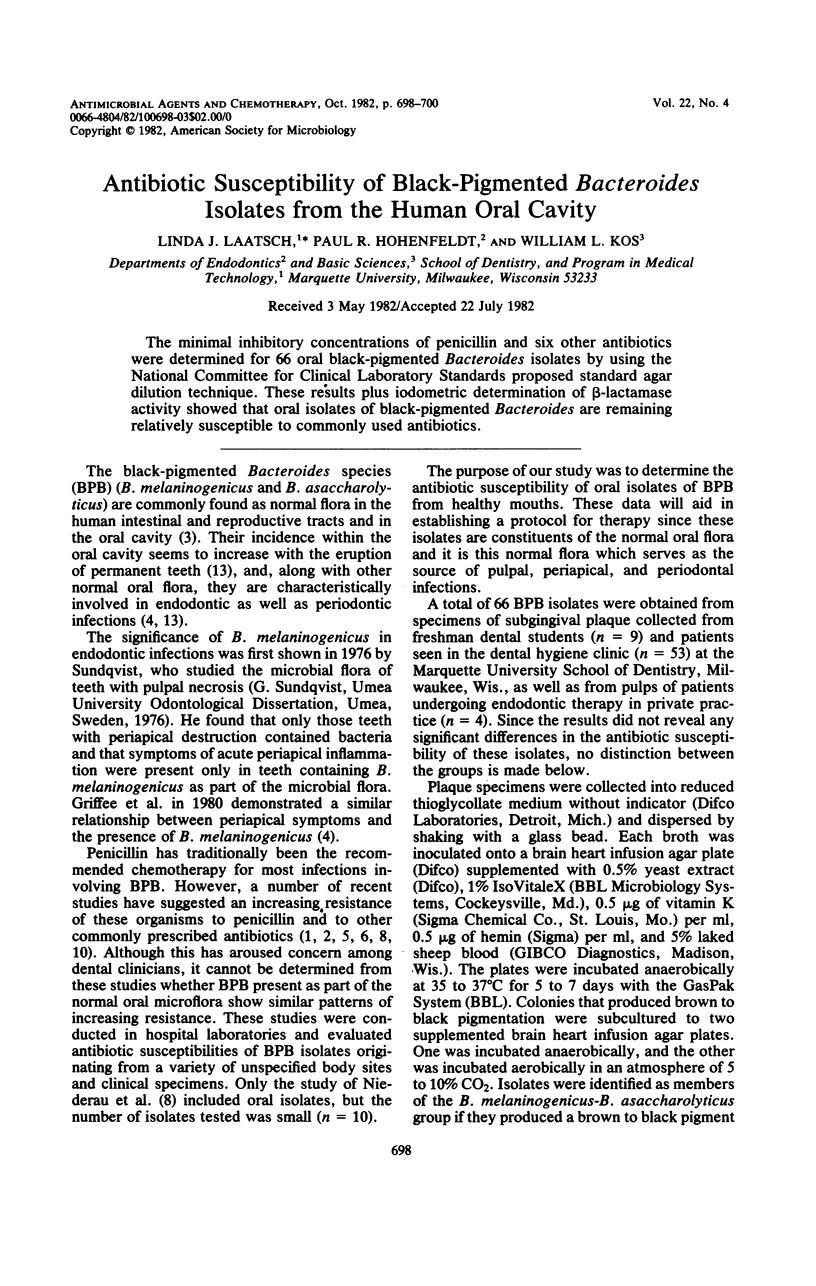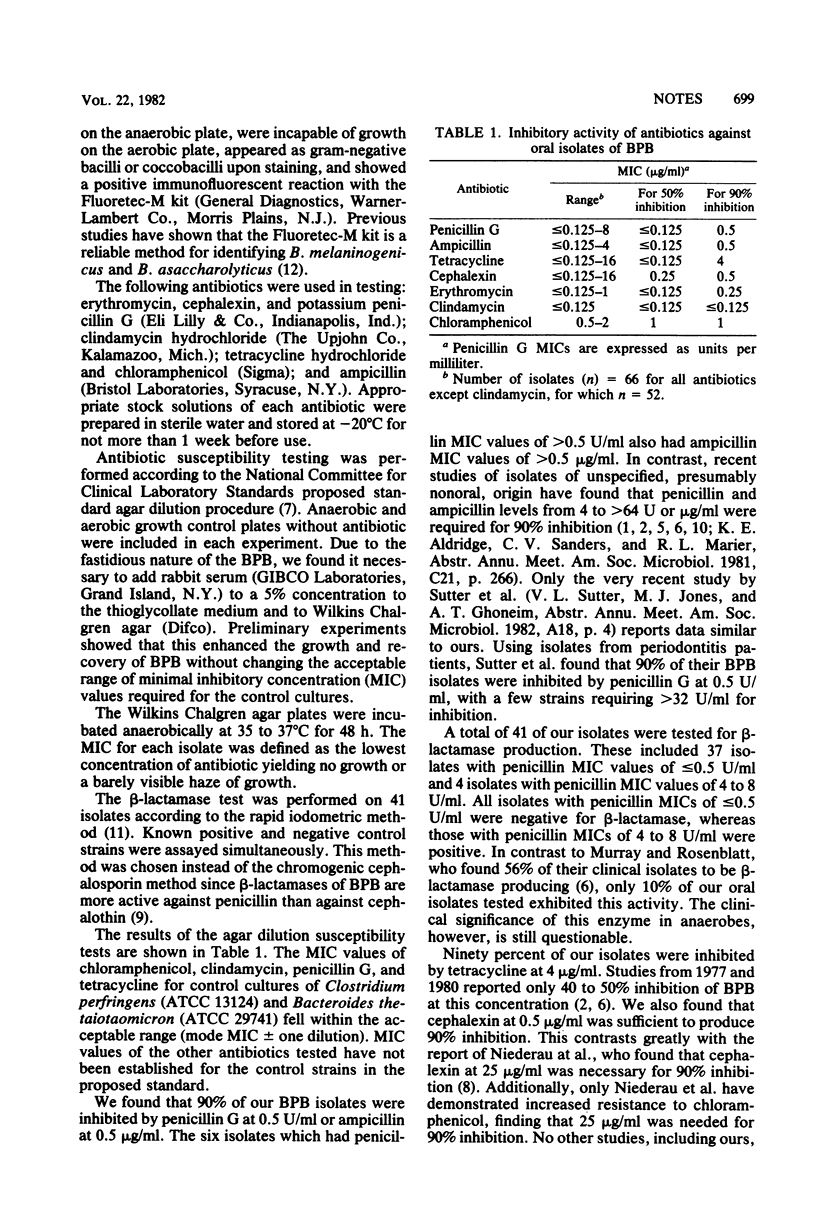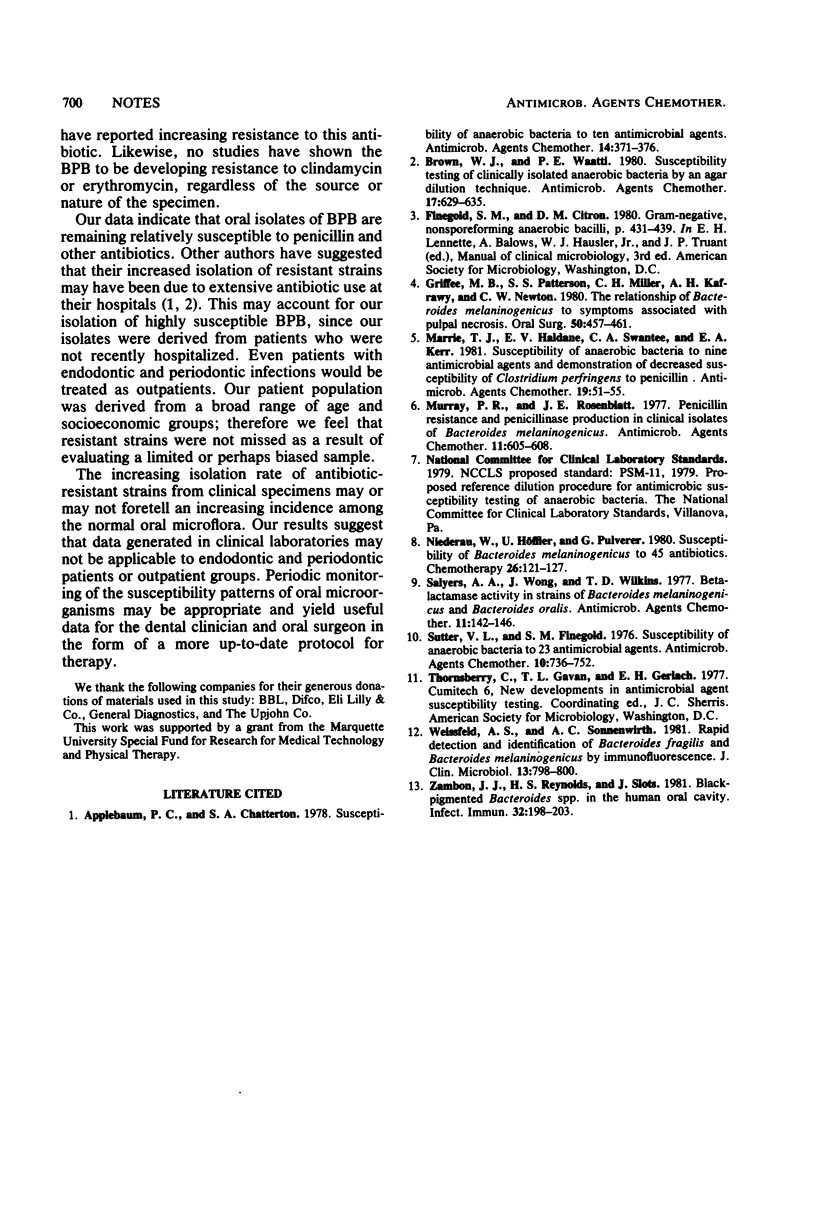Abstract
The minimal inhibitory concentrations of penicillin and six other antibiotics were determined for 66 oral black-pigmented Bacteroides isolates by using the National Committee for Clinical Laboratory Standards proposed standard agar dilution technique. These results plus iodometric determination of β-lactamase activity showed that oral isolates of black-pigmented Bacteroides are remaining relatively susceptible to commonly used antibiotics.
Full text
PDF


Selected References
These references are in PubMed. This may not be the complete list of references from this article.
- Appelbaum P. C., Chatterton S. A. Susceptibility of anaerobic bacteria to ten antimicrobial agents. Antimicrob Agents Chemother. 1978 Sep;14(3):371–376. doi: 10.1128/aac.14.3.371. [DOI] [PMC free article] [PubMed] [Google Scholar]
- Brown W. J., Waatti P. E. Susceptibility testing of clinically isolated anaerobic bacteria by an agar dilution technique. Antimicrob Agents Chemother. 1980 Apr;17(4):629–635. doi: 10.1128/aac.17.4.629. [DOI] [PMC free article] [PubMed] [Google Scholar]
- Griffee M. B., Patterson S. S., Miller C. H., Kafrawy A. H., Newton C. W. The relationship of Bacteroides melaninogenicus to symptoms associated with pulpal necrosis. Oral Surg Oral Med Oral Pathol. 1980 Nov;50(5):457–461. doi: 10.1016/s0030-4220(80)80015-6. [DOI] [PubMed] [Google Scholar]
- Marrie T. J., Haldane E. V., Swantee C. A., Kerr E. A. Susceptibility of anaerobic bacteria to nine antimicrobial agents and demonstration of decreased susceptibility of Clostridium perfringens to penicillin. Antimicrob Agents Chemother. 1981 Jan;19(1):51–55. doi: 10.1128/aac.19.1.51. [DOI] [PMC free article] [PubMed] [Google Scholar]
- Murray P. R., Rosenblatt J. E. Penicillin resistance and penicillinase production in clinical isolates of Bacteroides melaninogenicus. Antimicrob Agents Chemother. 1977 Apr;11(4):605–608. doi: 10.1128/aac.11.4.605. [DOI] [PMC free article] [PubMed] [Google Scholar]
- Niederau W., Höffler U., Pulverer G. Susceptibility of Bacteroides melaninogenicus to 45 antibiotics. Chemotherapy. 1980;26(2):121–127. doi: 10.1159/000237893. [DOI] [PubMed] [Google Scholar]
- Salyers A. A., Wong J., Wilkins T. D. Beta-Lactamase activity in strains of Bacteroides melaninogenicus and Bacteroides oralis. Antimicrob Agents Chemother. 1977 Jan;11(1):142–146. doi: 10.1128/aac.11.1.142. [DOI] [PMC free article] [PubMed] [Google Scholar]
- Sutter V. L., Finegold S. M. Susceptibility of anaerobic bacteria to 23 antimicrobial agents. Antimicrob Agents Chemother. 1976 Oct;10(4):736–752. doi: 10.1128/aac.10.4.736. [DOI] [PMC free article] [PubMed] [Google Scholar]
- Weissfeld A. S., Sonnenwirth A. C. Rapid detection and identification of Bacteroides fragilis and Bacteroides melaninogenicus by immunofluorescence. J Clin Microbiol. 1981 Apr;13(4):798–800. doi: 10.1128/jcm.13.4.798-800.1981. [DOI] [PMC free article] [PubMed] [Google Scholar]
- Zambon J. J., Reynolds H. S., Slots J. Black-pigmented Bacteroides spp. in the human oral cavity. Infect Immun. 1981 Apr;32(1):198–203. doi: 10.1128/iai.32.1.198-203.1981. [DOI] [PMC free article] [PubMed] [Google Scholar]


